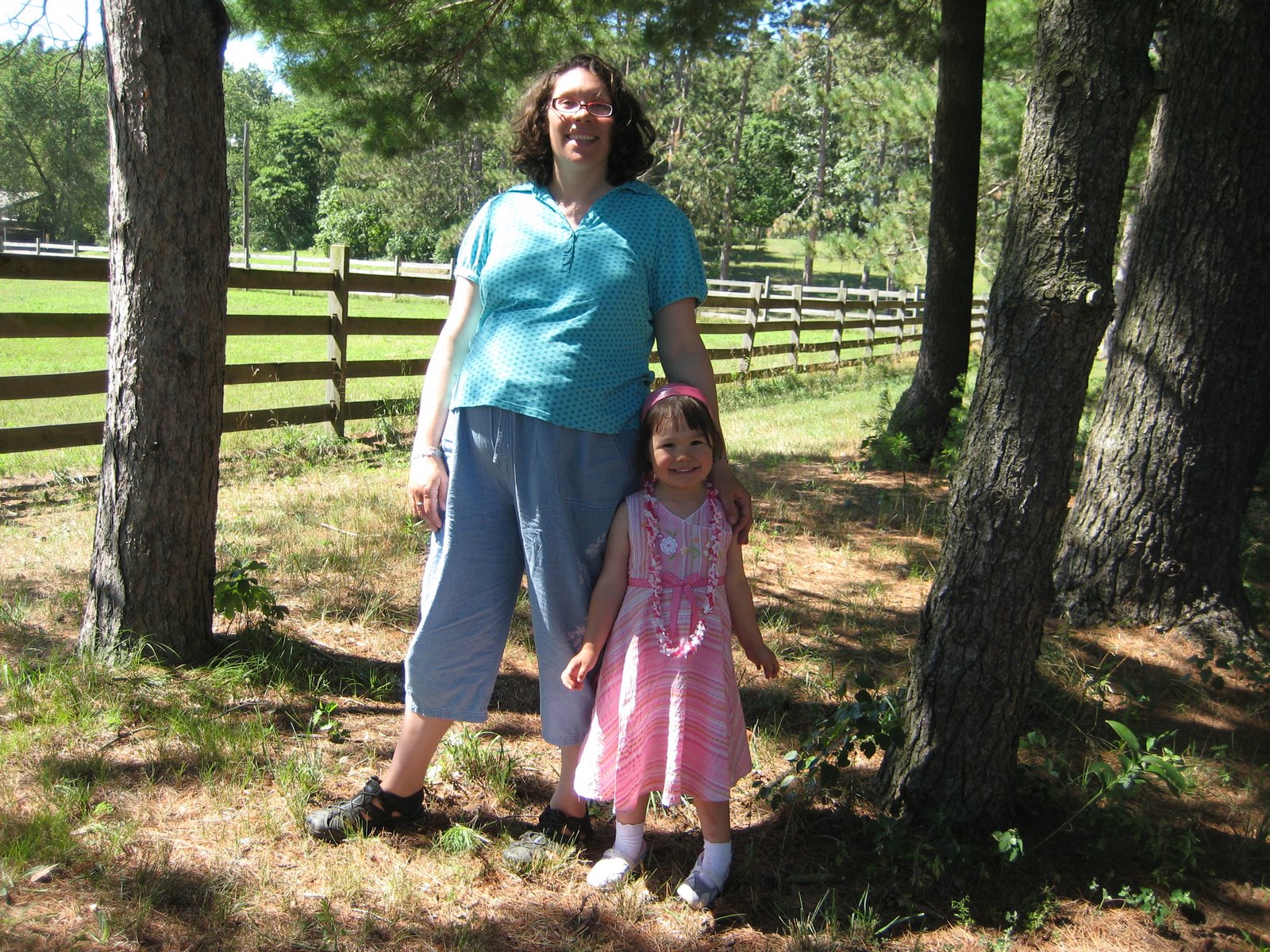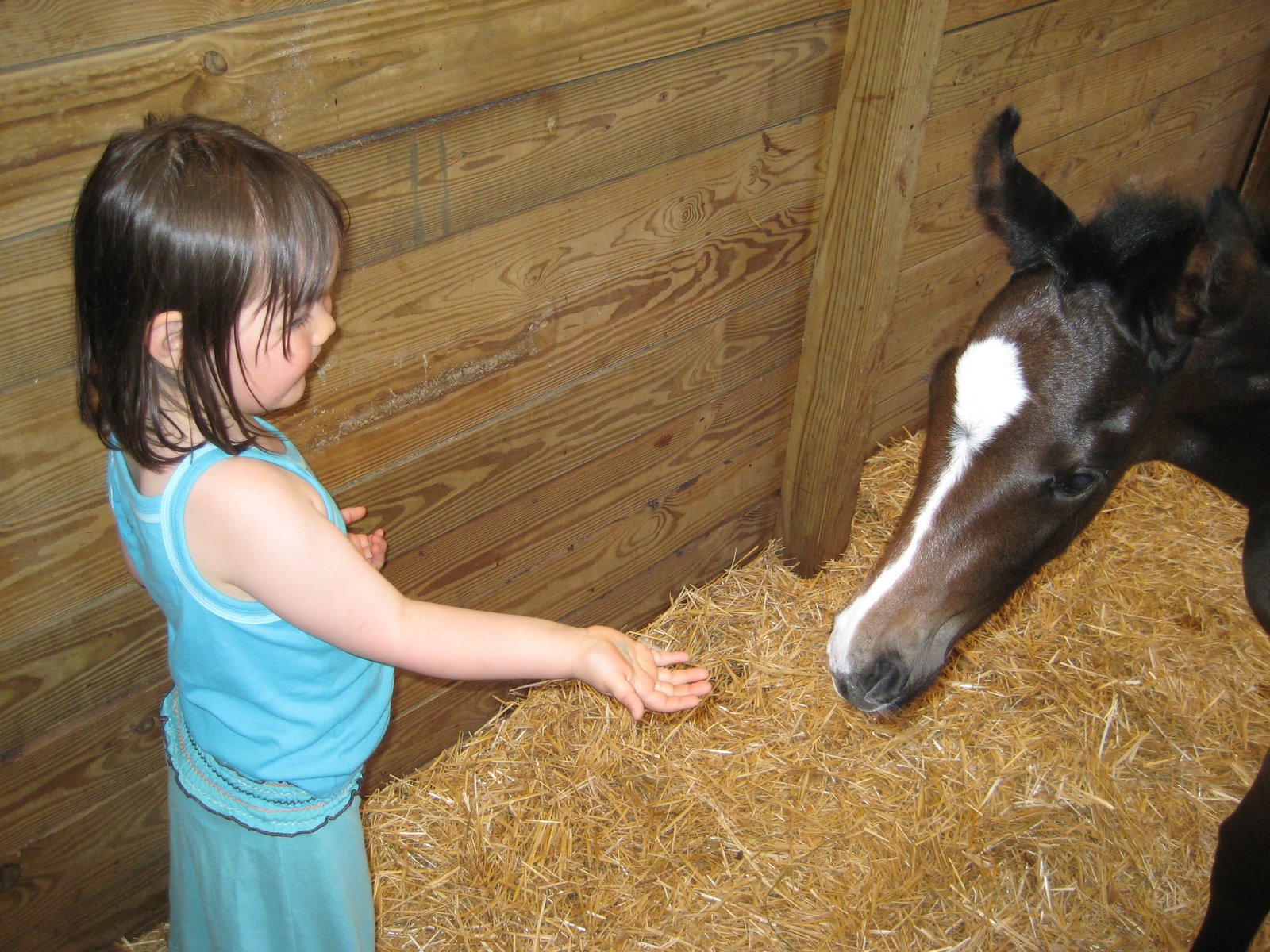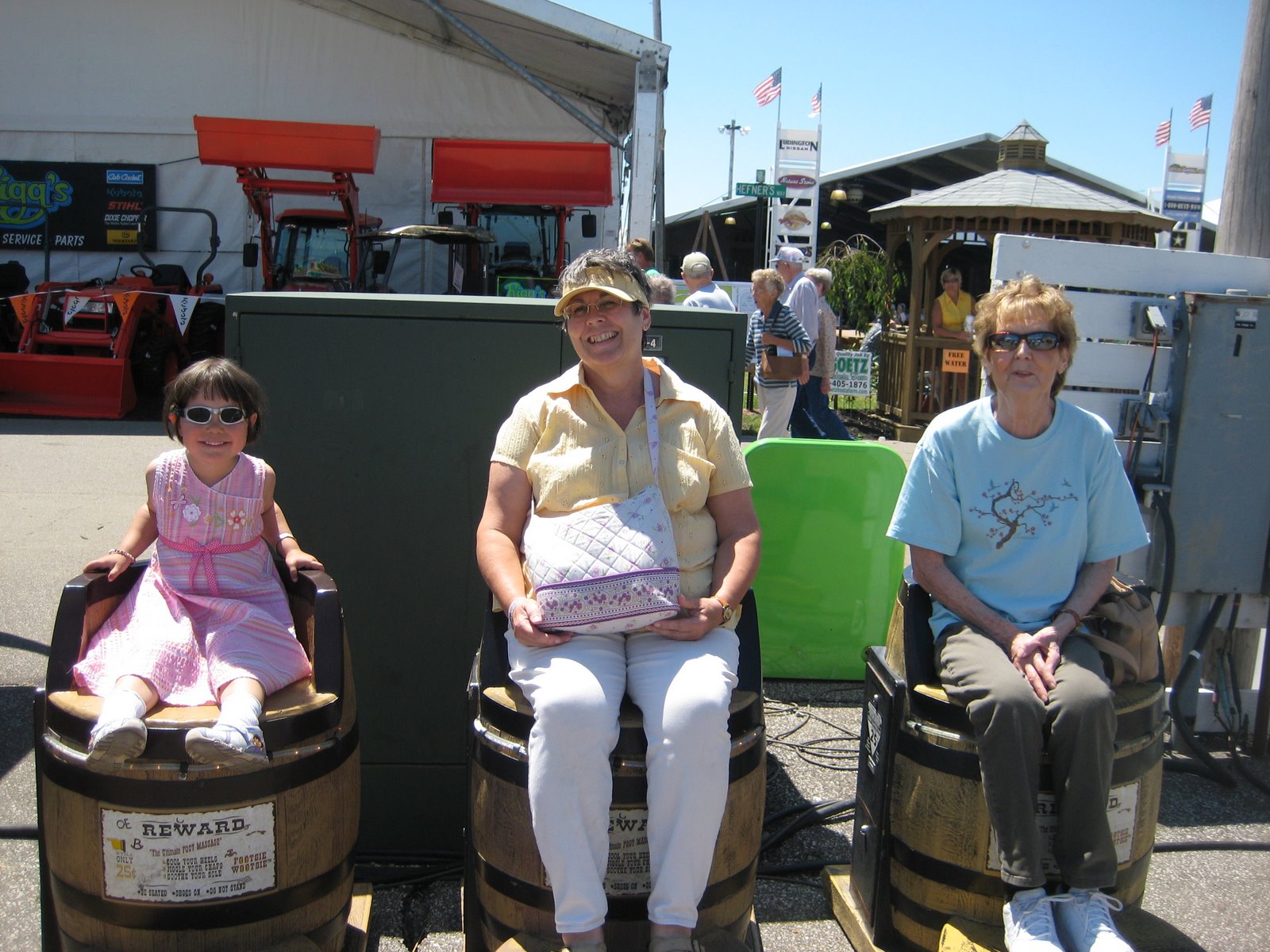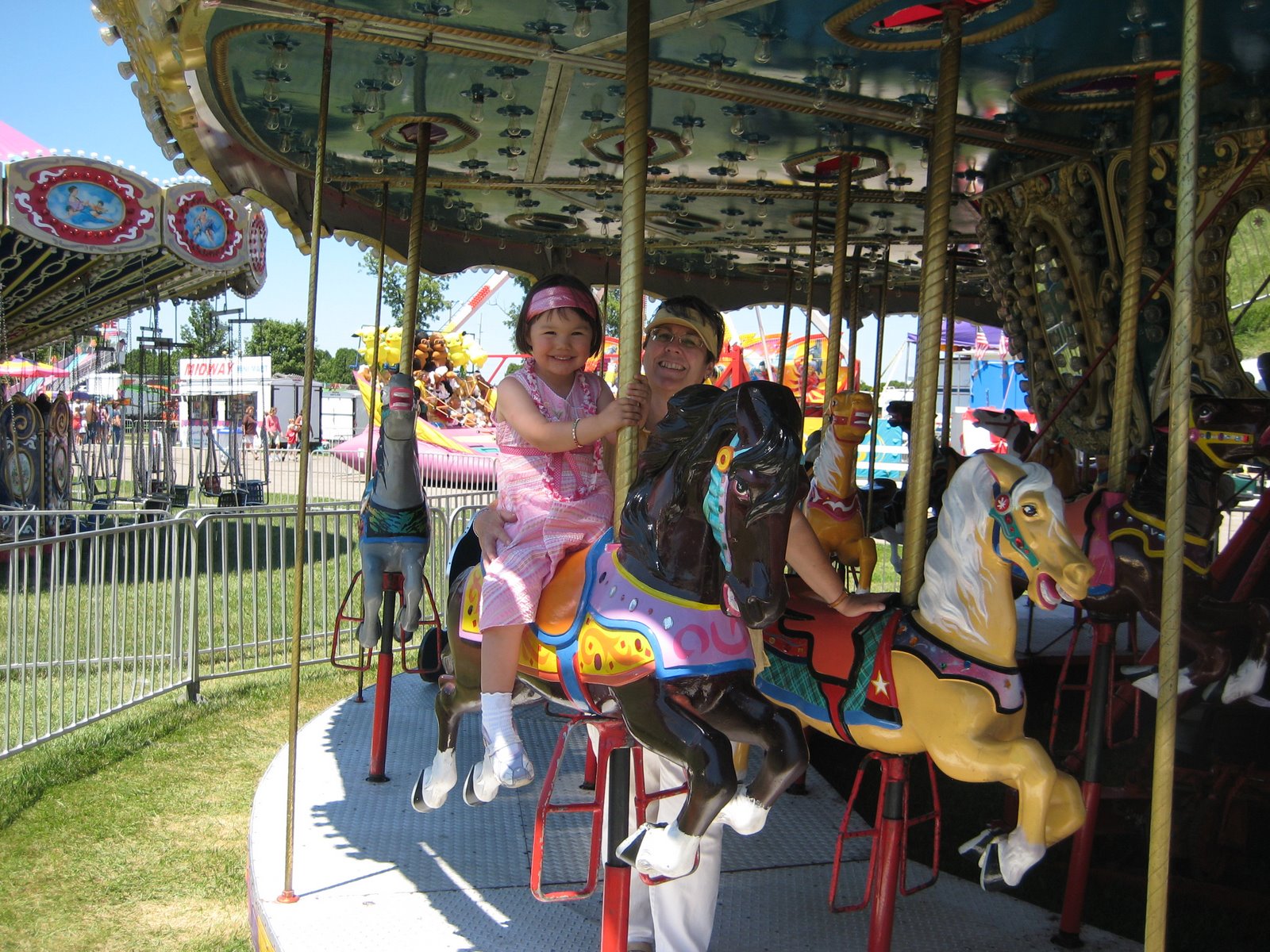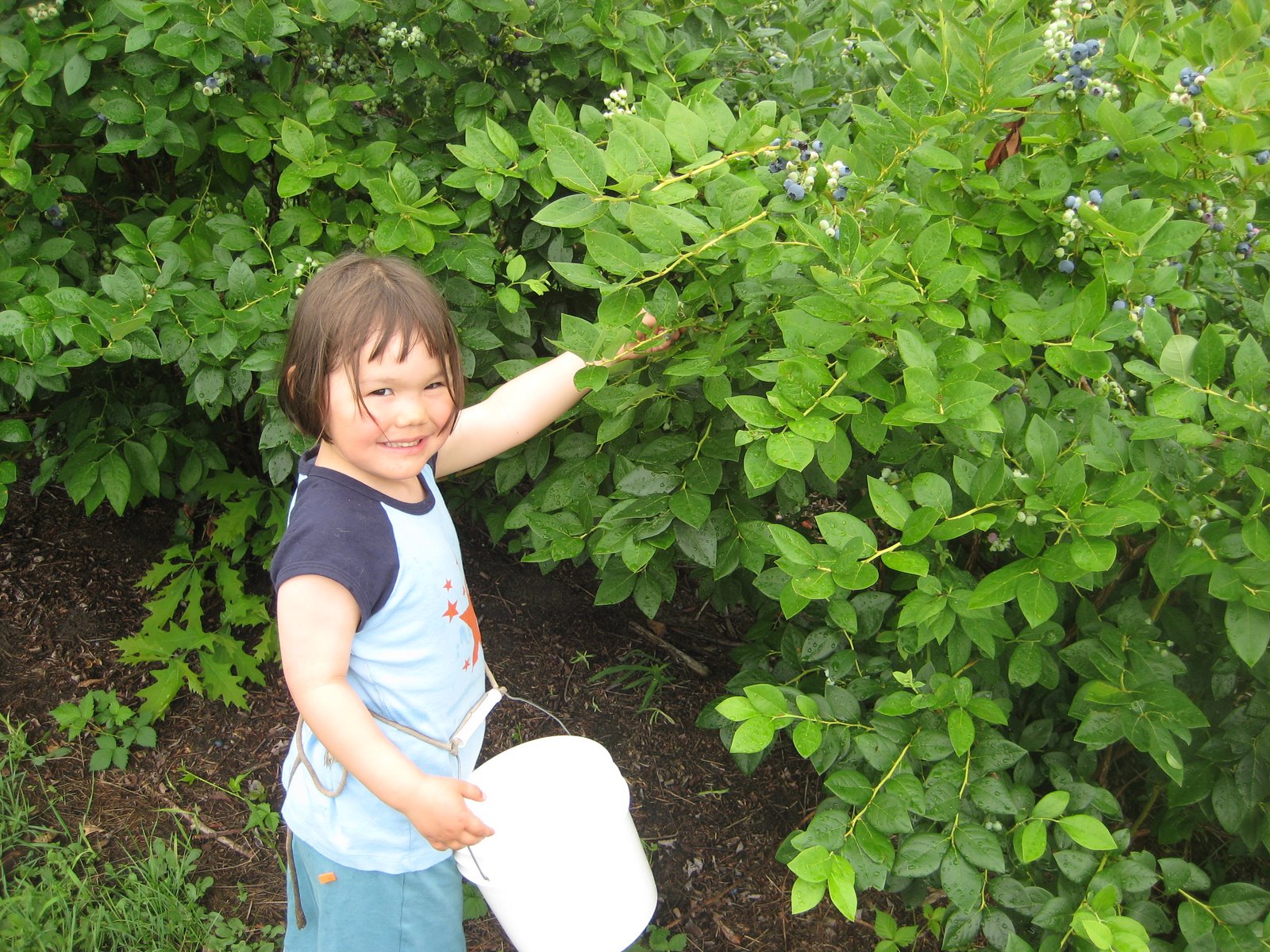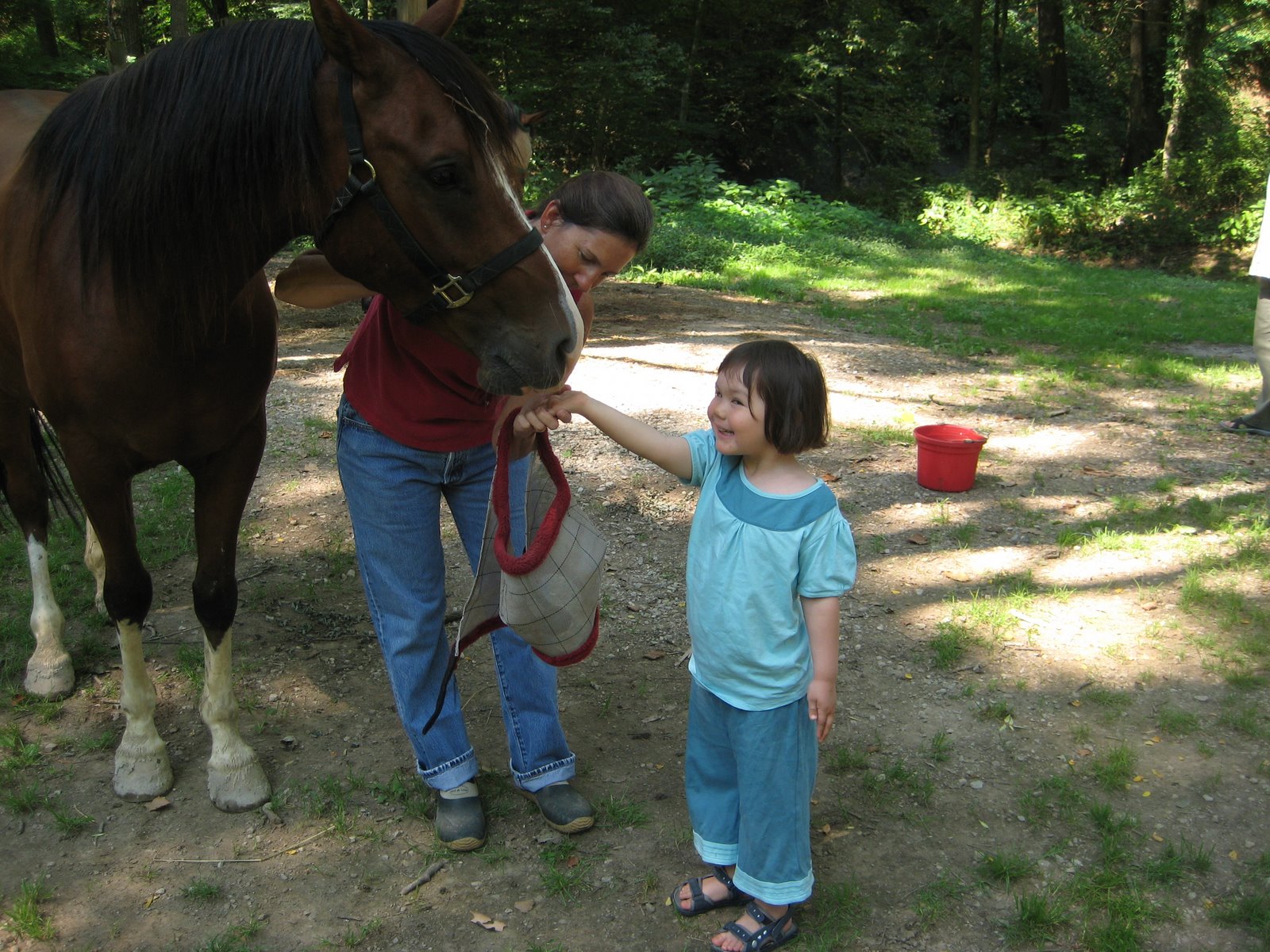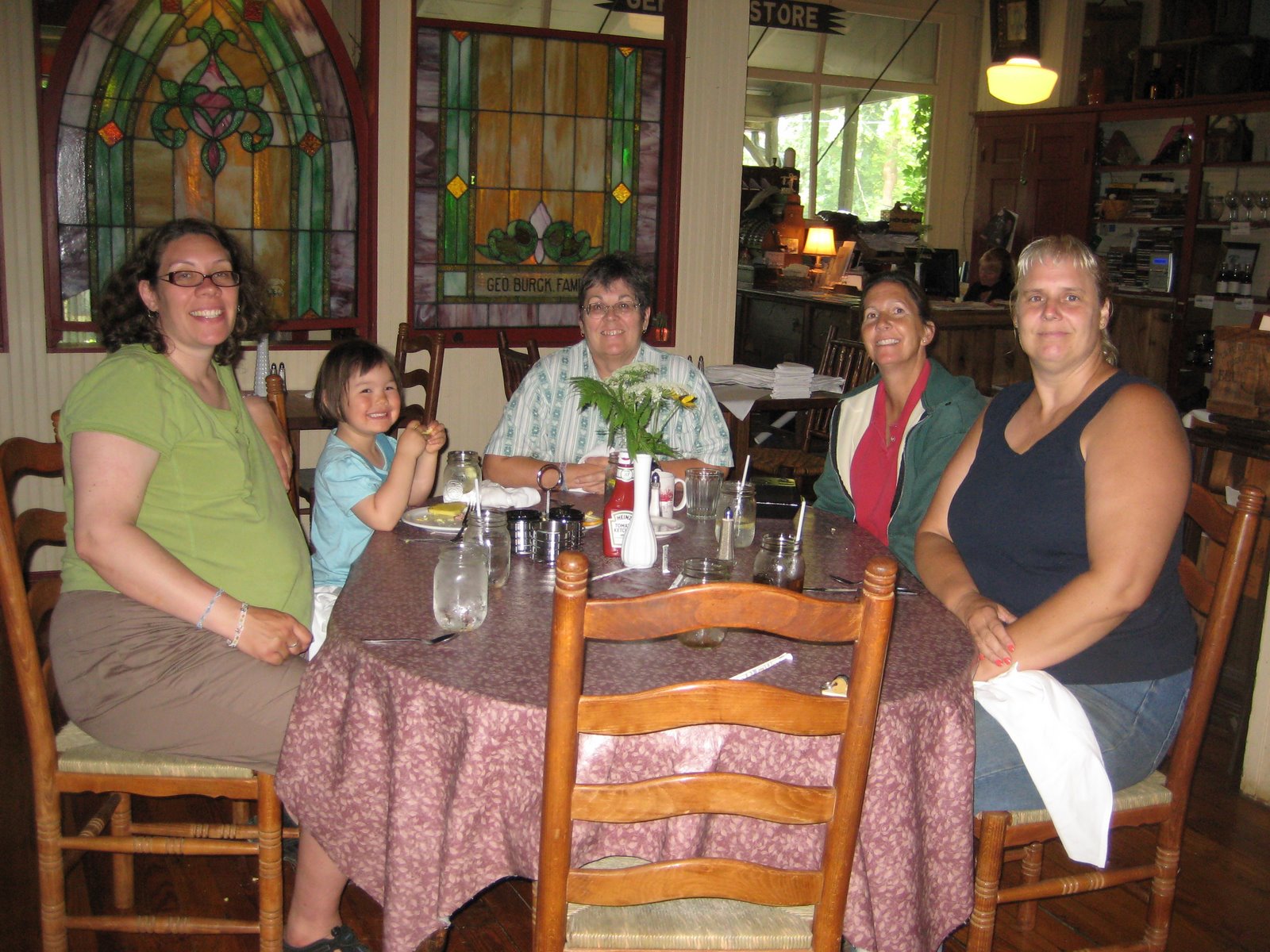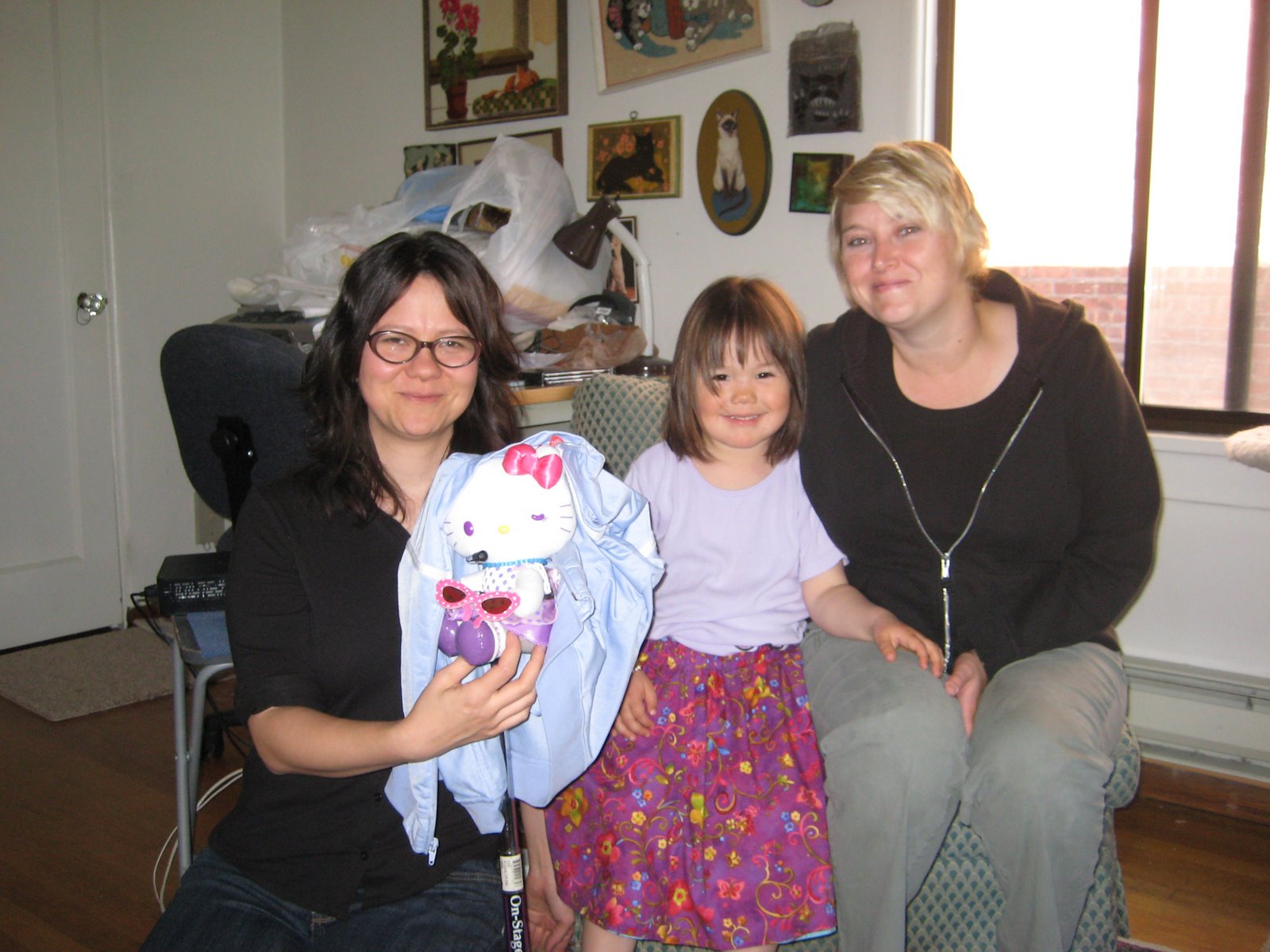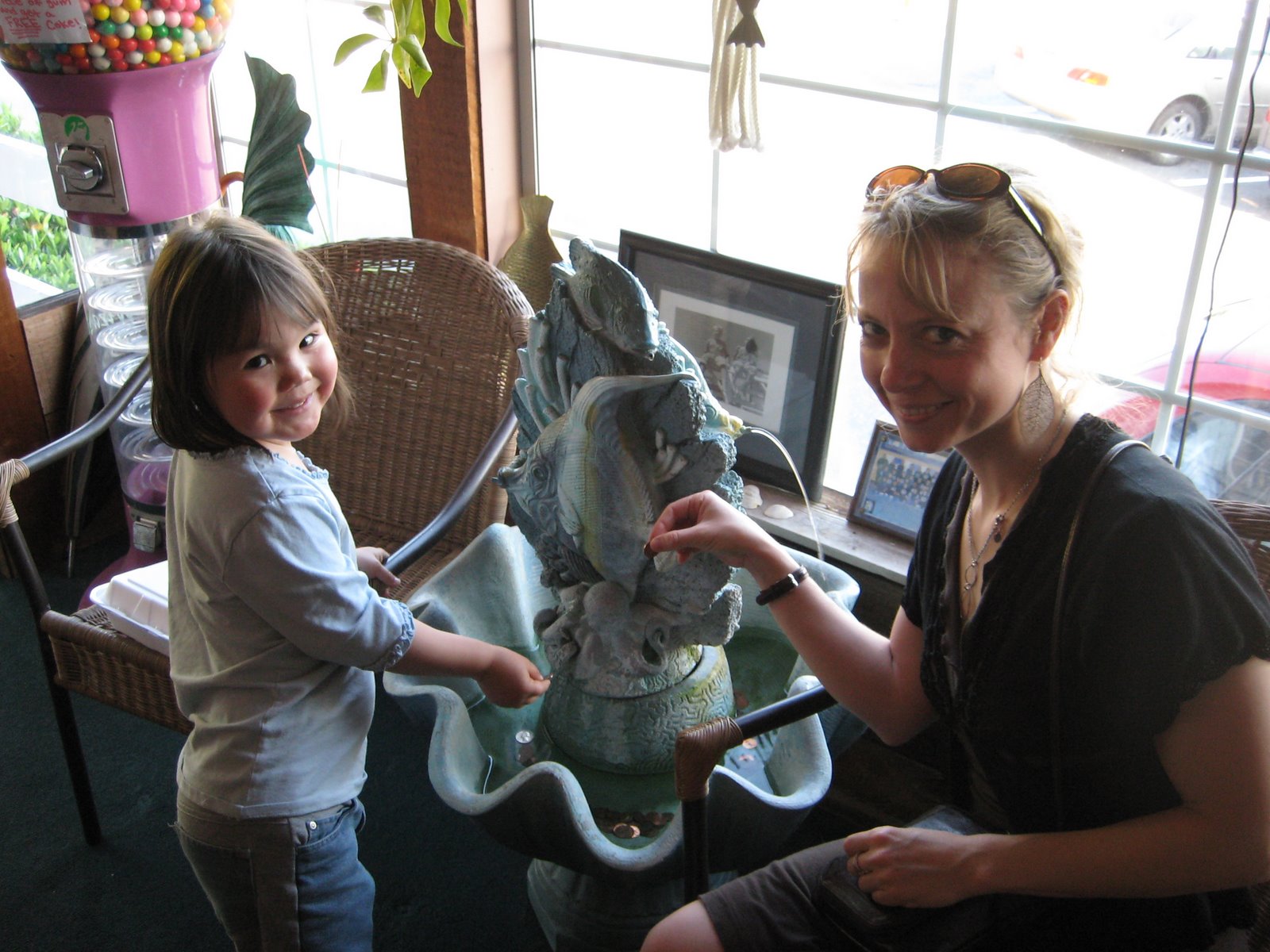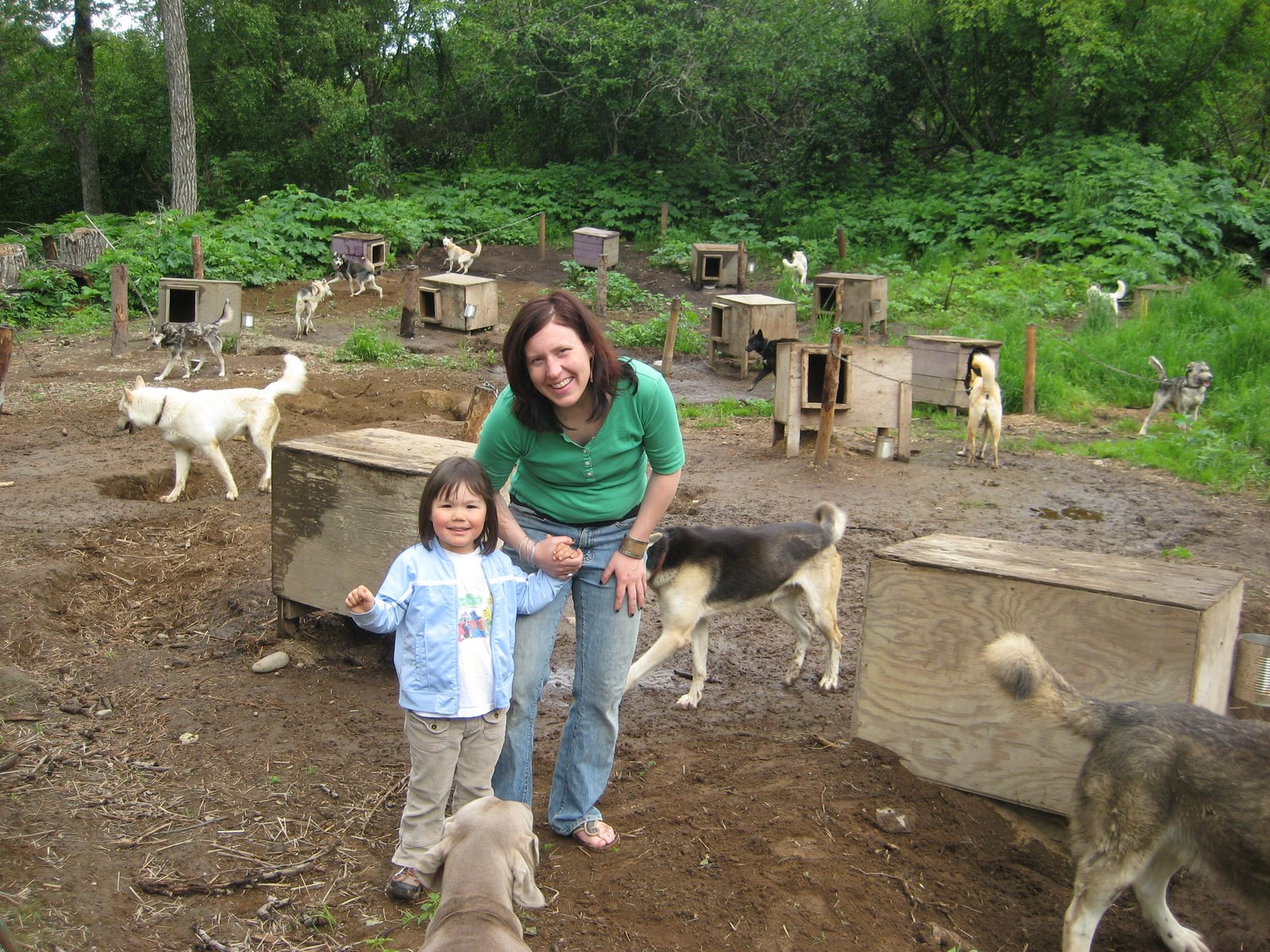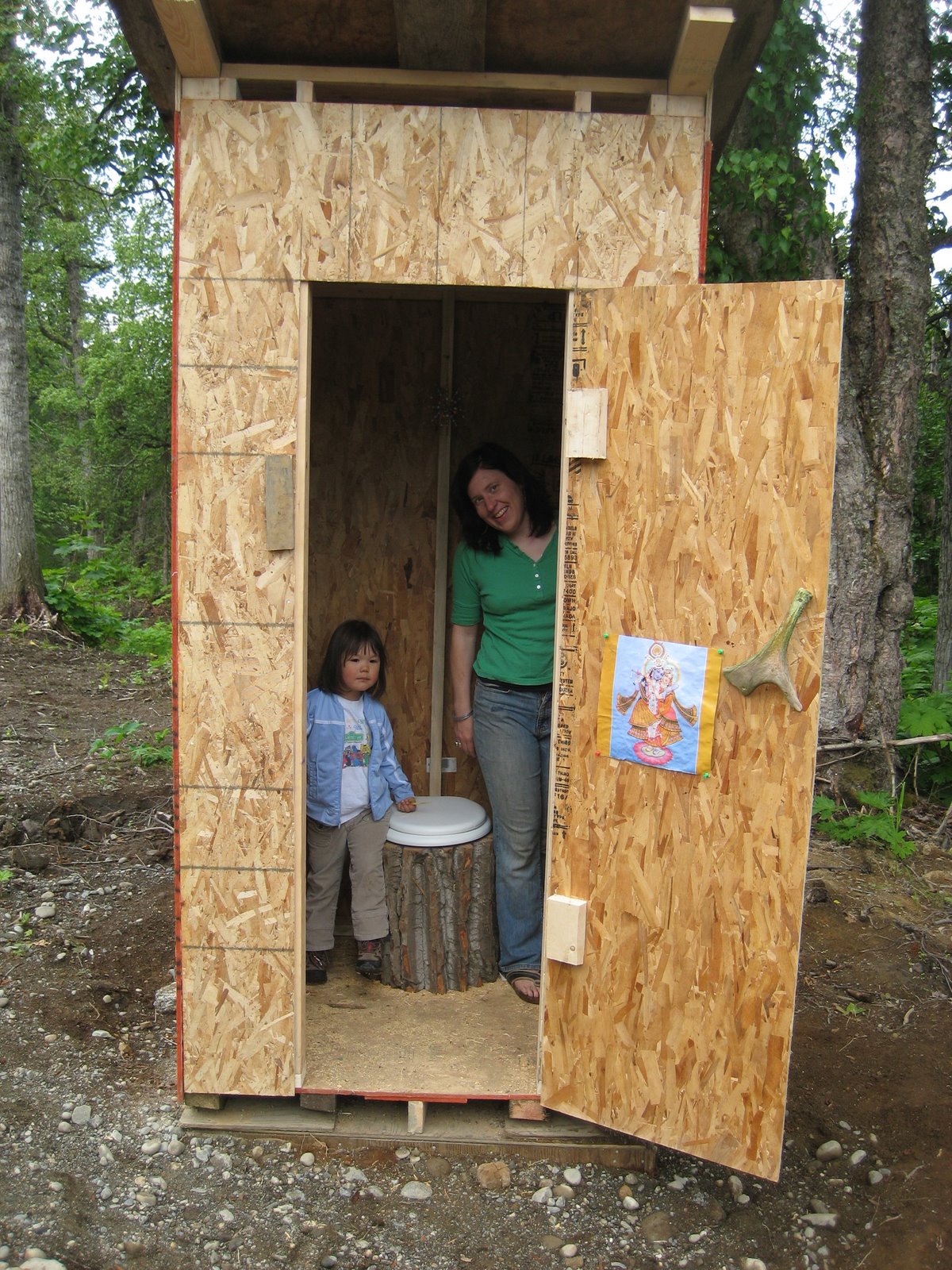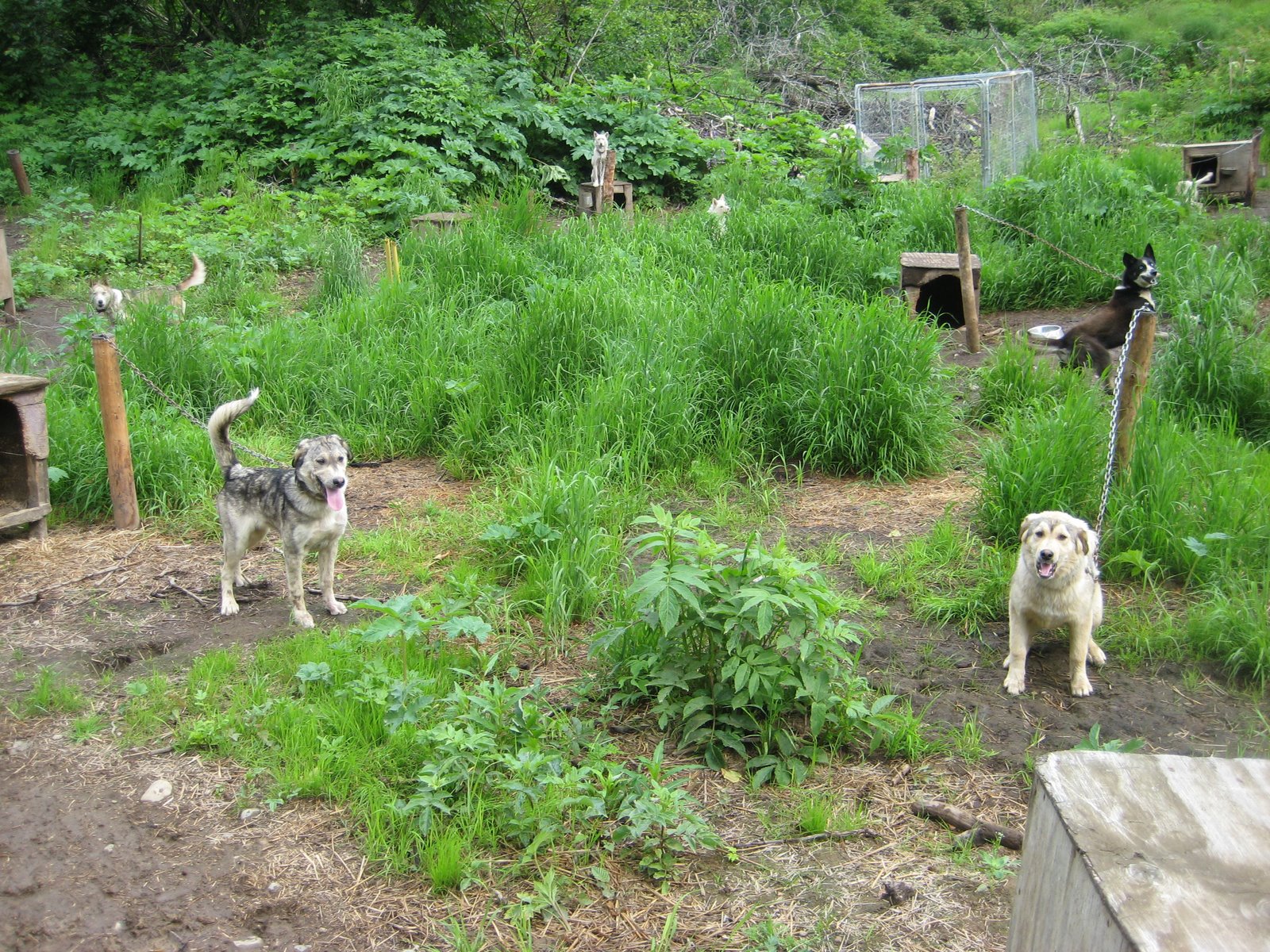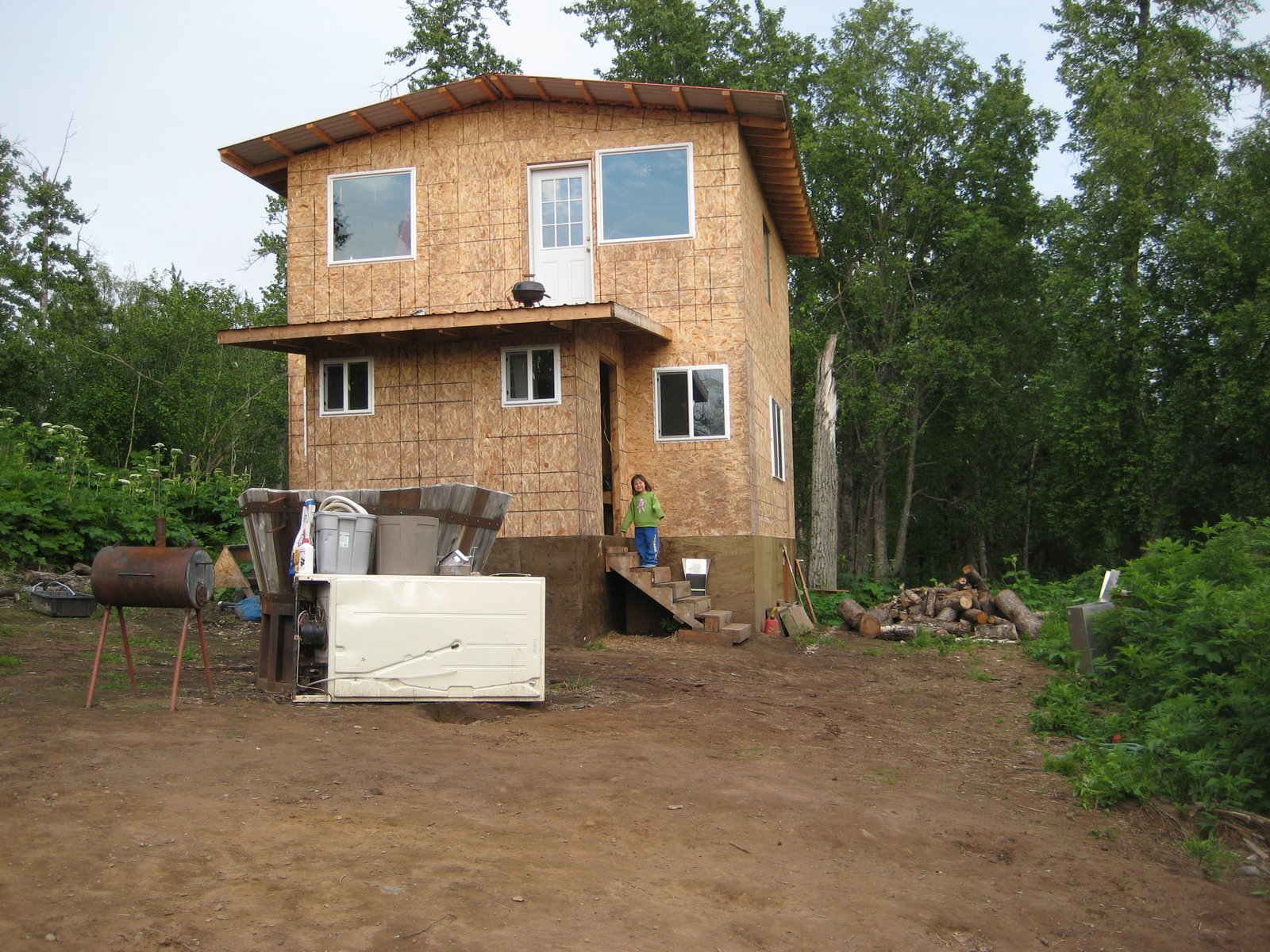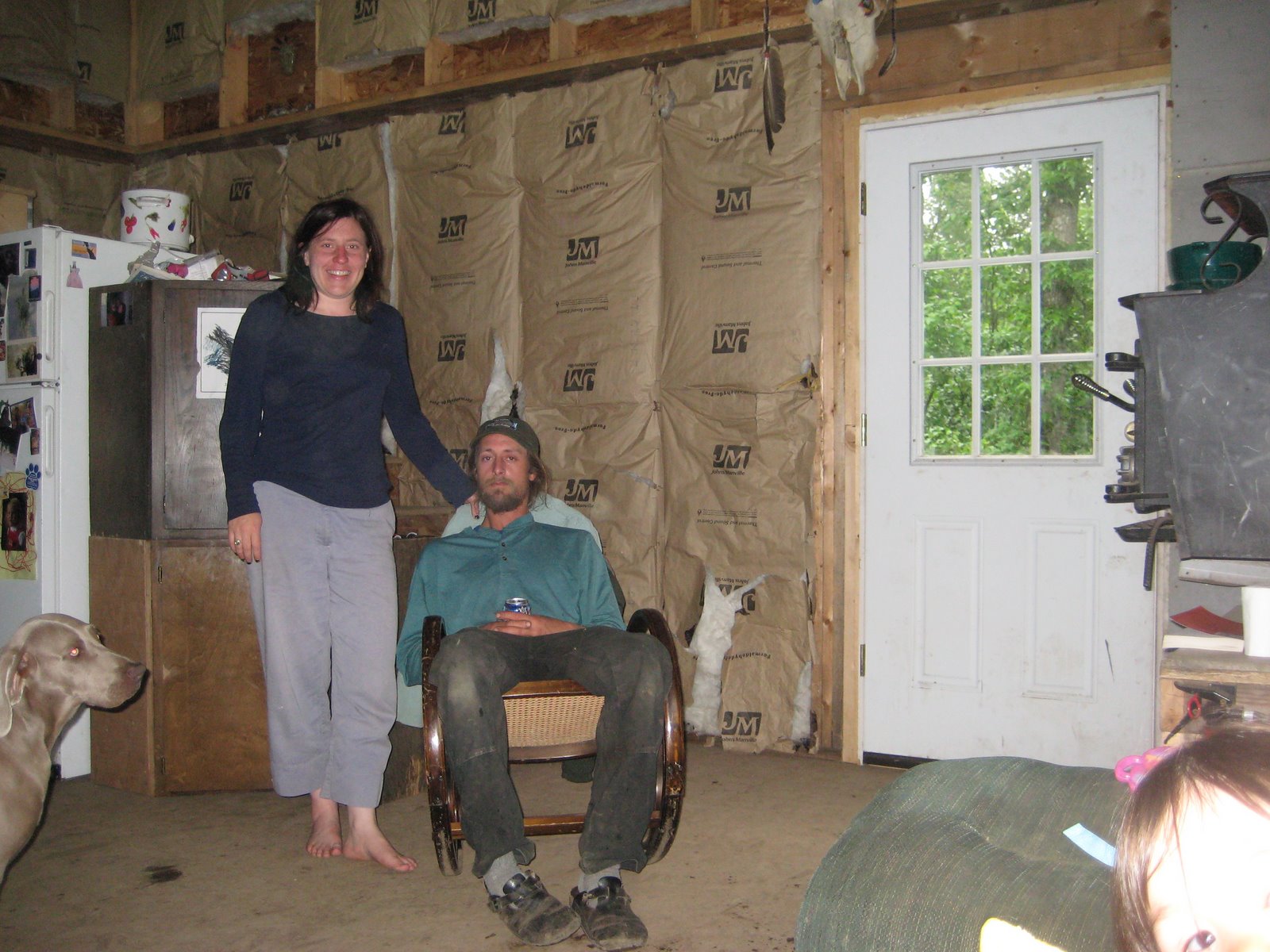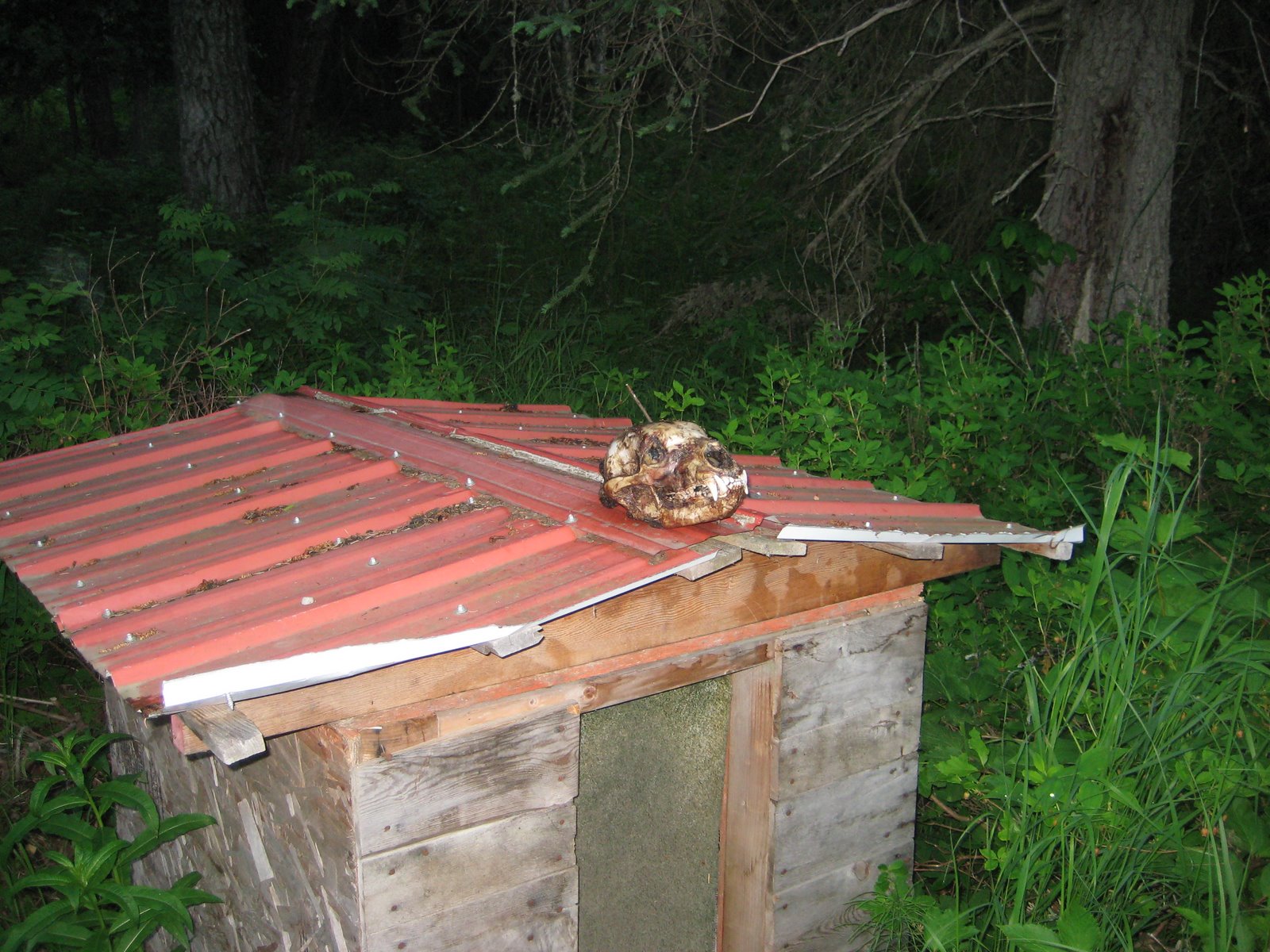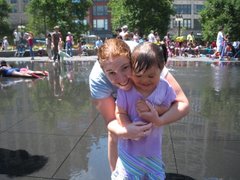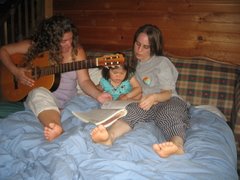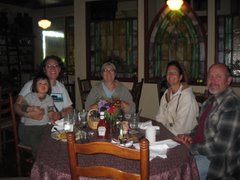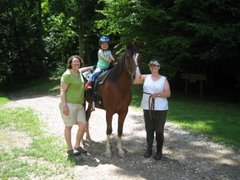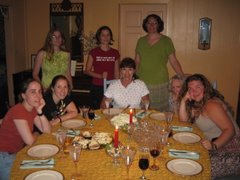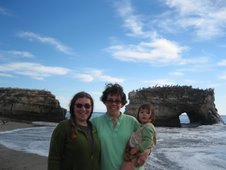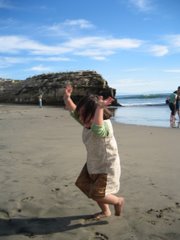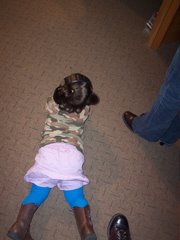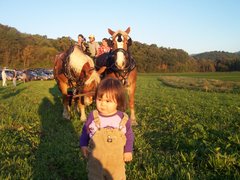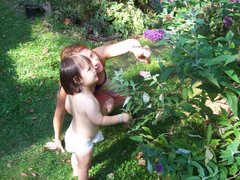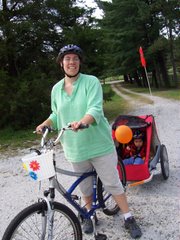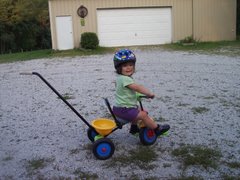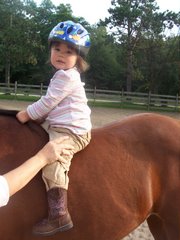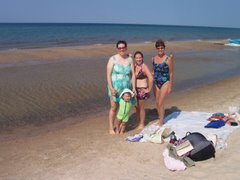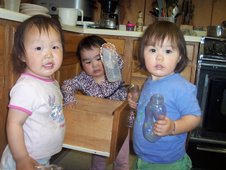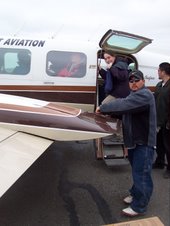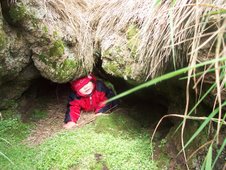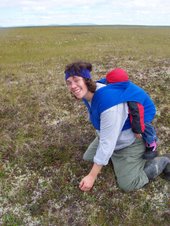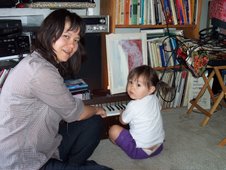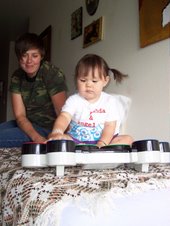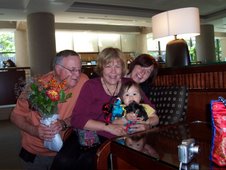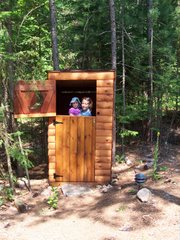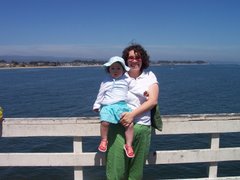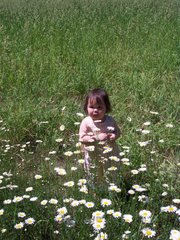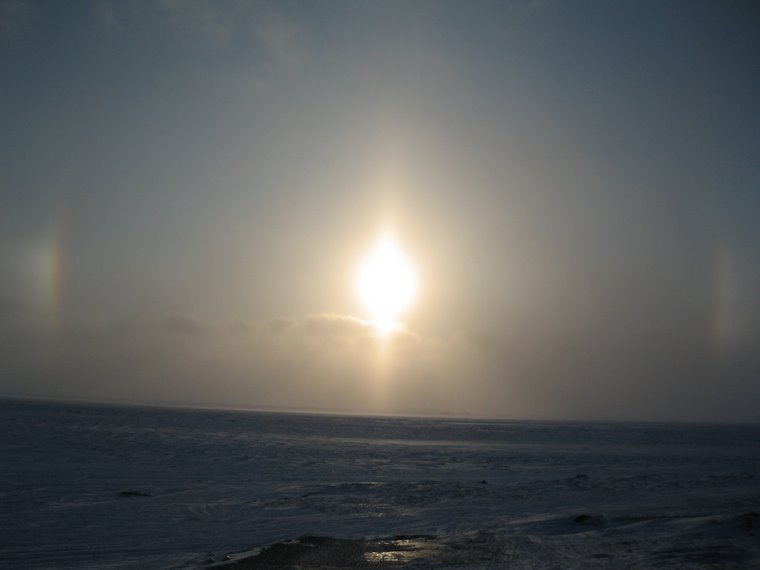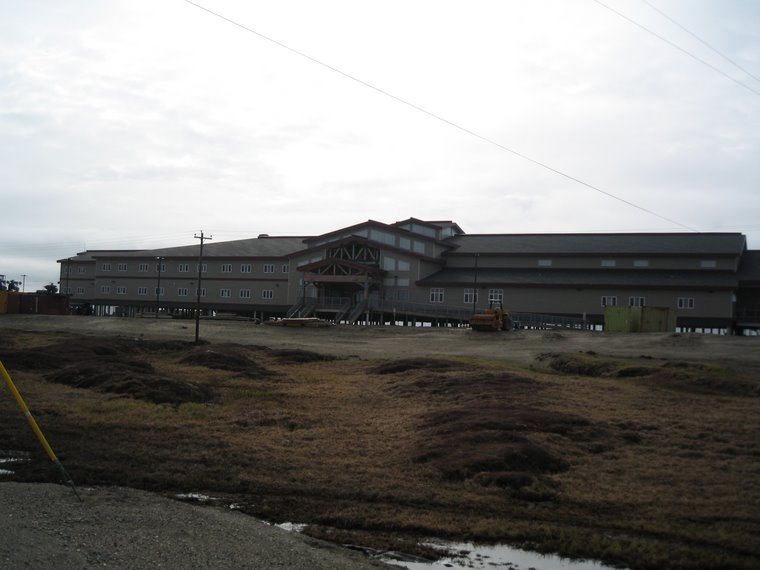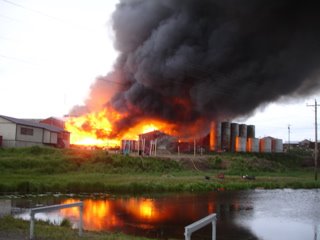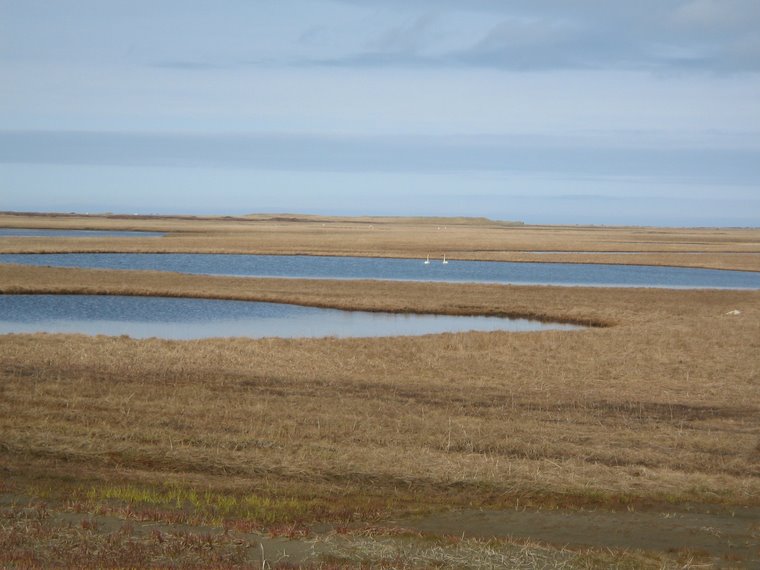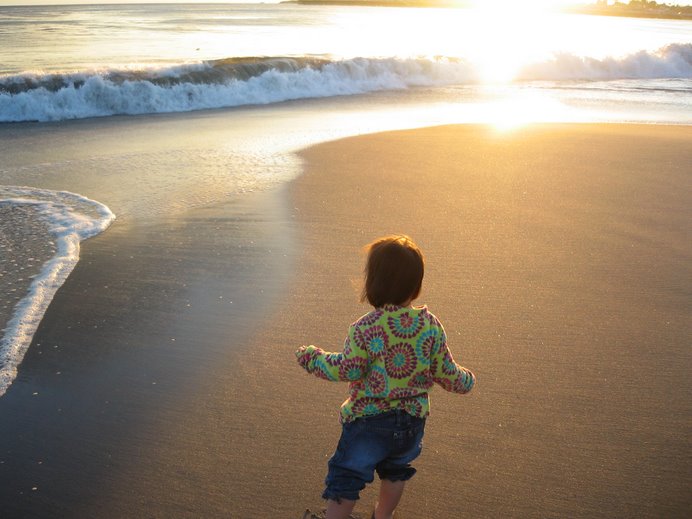On a nice, calm day this past week, Tuluk couldn't find a fishing partner to go driftnetting (exactly what it sounds like, to set a net out from a boat and drift while you wait to catch salmon), and so we convinced him to take us out on the bay -- we had a great time and caught some awesome fish! Then we took them to camp and cut and hung them up on our drying rack. Here are pictures of the whole process:

Tuluk setting the net out from the side of the boat.

Esther is so excited to be out on the bay, singing to the ocean and the birds and the fish -- here she is waiting to see if any salmon get caught in our net.

These guys are caught....


Bringing in the catch.

Tuluk and Esther on the Dock with our day's catch in a gunny sack.

Esther showing us the difference between chum salmon and king salmon -- the kings have black spots on their tails (hard to see in this photo) and hooked mouths. They really are rich!
Cutting Fish:

First, cut off the head and out the guts (we'll show you what we did with the heads later).

Split open the Fish along either side of the backbone with a Kinaluq -- in most parts of Alaska, it's called an "Ulu" but in Hooper Bay we use a more specific term. It's a rounded-blade "woman's" knife. This one I'm using was made in Hooper Bay by expert Donald Tall, and Tuluk got it for me for Mother's Day. How nice!

Next, lay the fish open, slicing down the sides of the ribs so that the side of the fish lays out into one flat piece (the two sides are still connected by the tail).

Make cuts through the flesh down to, but not through, the skin on each flank, and as a final step, stretch the skin so there is space between the cuts. Cut out the middle, with the ribs and spine, so that there are two flanks hanging, still connected by the tail.

Brine the fish in your special mixture -- some folks use sea water, some use spices, some use brown sugar...I like just salty water.

Hoorah! Esther and I are proud of our work cutting fish, and feel we've accomplished a lot when we look behind us at our fish rack, with the fish hanging there.
Making Ooksook:
So now we get to the really gooey part: how to make "stinkhead" fish by putrifying them dug into the ground for a couple weeks. Although it sounds totally gross, there are many northern cultures who make this delicacy; it's akin to the Norweigian "Lutefisk" I believe it's called. I actually have never tried it, but I'm never opposed to trying something out, and I like it that the fish heads don't go to waste. Tuluk loves the stuff. Supposedly it smells horrible but tastes sweet and delicious...we'll see. But here's what we did:

Fish Heads in a gunny sack awaiting their "burial".

Digging the Ooksook hole in the sand.

Dropping them in...

Burying them (For a couple weeks or so, depending on the kind of ground they are in -- it's sand where we buried these, so they will be ready sooner than other kind of soil).

Marking the spot so we don't forget where they're buried!
 First, down at camp we cut some willow bushes and peeled some of the bark, which lends a bitterness to the smoke.
First, down at camp we cut some willow bushes and peeled some of the bark, which lends a bitterness to the smoke. Then we hauled all the fish to town, to the smokehouse behind Tuluk's mom's house, and we carried the fish inside, as Esther is showing us in this picture.
Then we hauled all the fish to town, to the smokehouse behind Tuluk's mom's house, and we carried the fish inside, as Esther is showing us in this picture. 
 Then we hung the fish on the racks inside the smokehouse -- Tuluk laughingly said, "What are you doing taking a picture of me doing this women's work?":). Well, since he showed me how this year, I can do it myself next year... :)
Then we hung the fish on the racks inside the smokehouse -- Tuluk laughingly said, "What are you doing taking a picture of me doing this women's work?":). Well, since he showed me how this year, I can do it myself next year... :) Then we lit the fire...
Then we lit the fire... And waited for it to catch...and then it got too smoky to take any more pictures until the fish were done! Over the fire was a piece of tin that kept the fire from growing too large, so that the main output was smoke. It took 3 days of constantly (or almost, anyway) checking the fire, keeping it smoking, adding wood (except at night we left it alone) and by the third morning the fish were done and ready to be put away. Tuluk and I are a great team processing our stuff -- he got a vaccum sealer, so I cut up the stuff, put it in the bags he's getting ready, and he seals it up. Here are some pictures of me processing the fish in our kitchen:
And waited for it to catch...and then it got too smoky to take any more pictures until the fish were done! Over the fire was a piece of tin that kept the fire from growing too large, so that the main output was smoke. It took 3 days of constantly (or almost, anyway) checking the fire, keeping it smoking, adding wood (except at night we left it alone) and by the third morning the fish were done and ready to be put away. Tuluk and I are a great team processing our stuff -- he got a vaccum sealer, so I cut up the stuff, put it in the bags he's getting ready, and he seals it up. Here are some pictures of me processing the fish in our kitchen:
 Surrounded by all our food ready to put up for the winter in the freezer! It feels great to accomplish all this, especially since Esther and I are leaving Hooper Bay on Thursday for 3 months, to stay in Indiana with my mom and wait for our new baby. It's been an awesome June, and hope you enjoyed watching our process also.
Surrounded by all our food ready to put up for the winter in the freezer! It feels great to accomplish all this, especially since Esther and I are leaving Hooper Bay on Thursday for 3 months, to stay in Indiana with my mom and wait for our new baby. It's been an awesome June, and hope you enjoyed watching our process also.


































































